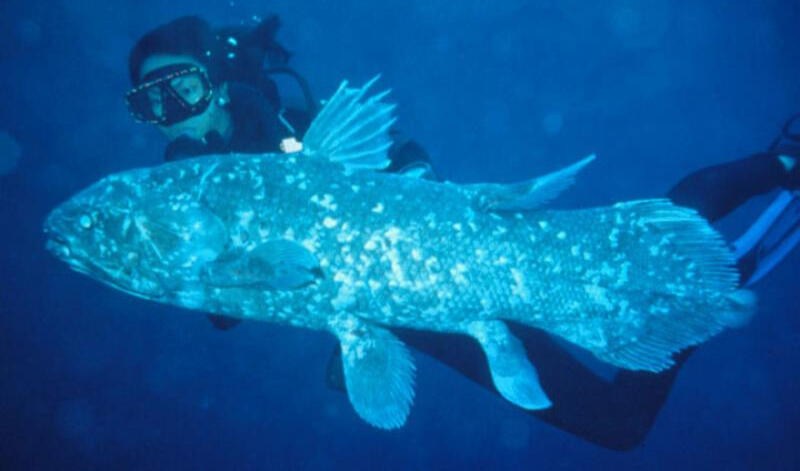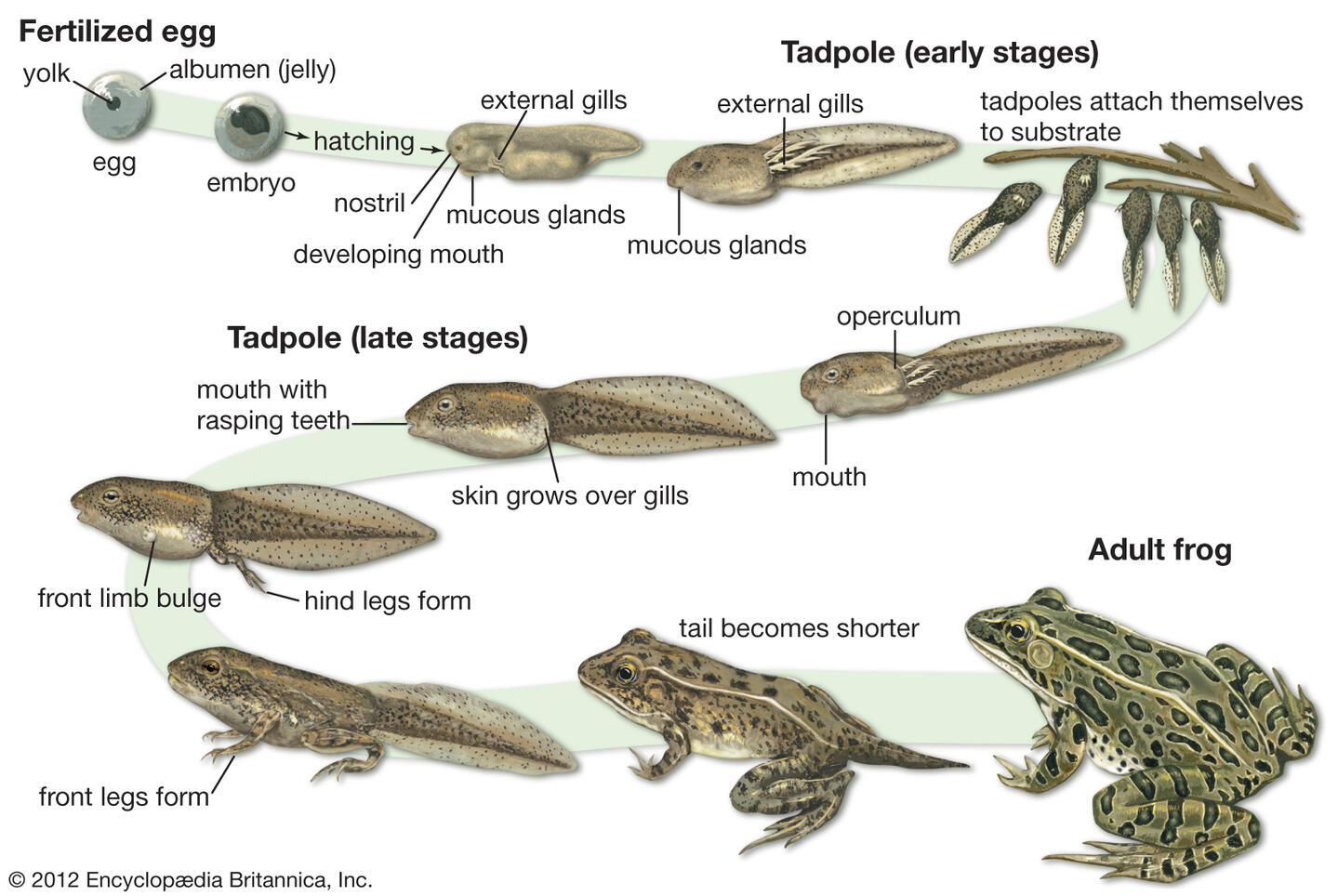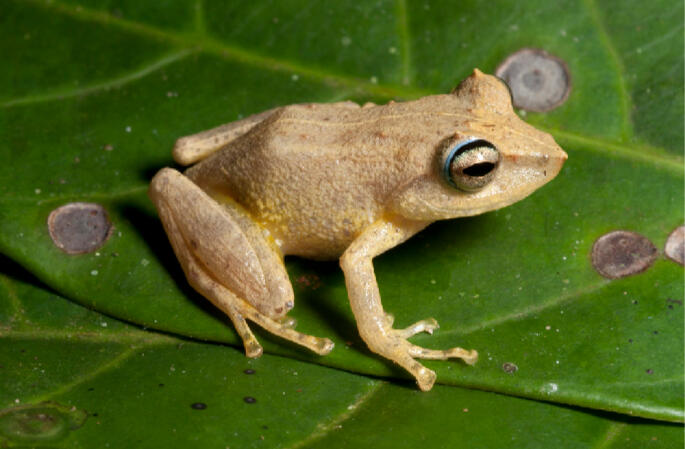Sarcopterygii

Latimeria menadoensis at around a depth of 50 feet
The lobe-finned fish Sarcopterygii is the sister clade of the ray-finned fishes Actinopterygii. Their fins are paired with a fleshy pectoral rather than bone, in contrast to actinopterygians, giving them their name (literally "flesh-fin"). They diverged from the ray-finned fishes around 450 million years ago.
Only three extant groups remain: Actinistia (coelacanths), Dipnoi (lungfish), and Tetrapodomorpha (tetrapods and their closest sarcopterygian relatives). There are only two extant species of coelacanths and six extant species of lungfish.
Characteristics unique only to the coelacanth include the presence of a rostral organ in its snout and an intracranial joint in its skull. It has a hollow and fluid-filled notochord, incomplete vertebrae, and an oil-filled gas bladder. Their fins are limb-like and function similarly to tetrapod limbs, making it significant for insights regarding tetrapod evolution. They are said to have remained largely unchanged for at least 200 million years, earning it the name "living fossil."
Lungfishes are considered to be the closest relatives of the tetrapods. They are studied for insights regarding the evolution from fins to limbs. They utilize lungs formed from the primitive pharynx for gas exchange. Although they possess gills, most breathe through their lungs.
Examples of Sarcopterygii

Neoceratodus forsteri in Suma Aqualife Park, Kobe, Japan
The only two extant species of coelacanth are Latimeria chalumnae (known as the West Indian Ocean coelacanth) and Latimeria menadoensis (known as the Indonesian coelacanth, shown here). The West Indian coelacanth is classified as critically endangered by the IUCN, with only around fewer than 400 living individuals left. The Indonesian coelacanth is classified as vulnerable.
Lungfish are classified into three genera: Protoperus with four species, Lepidosiren with one, and Neoceratodus with one.
Neoceratodus forsteri (shown above) is endemic to Australia in south-eastern Queensland. It is also known as the Australian lungfish or Queensland lungfish. It has a single lung, unlike other species of lungfish with paired lungs. Its color ranges from olive-green to brown. The average lifespan of an Australian lungfish is at least 20-25 years, with the oldest known species in captivity living up to 80 years before being euthanized in February 2017.
Sarcopterygii in the Philippines
No species of Sarcopterygii can be found in the Philippines. As indicated by their common names, the West Indian Ocean coelacanth can be found in the western Indian Ocean while the Indonesian coelacanth can be found in the waters of Sulawesi, Papua, and West Papua in Indonesia.
Most lungfishes can be found in the waters of Africa (four species of genus Protopterus), South America (the only species of genus Lepidosiren), and Australia (the only species of genus Neoceratodus).
Amphibia

Literally "both kinds of life," amphibians are characterized by their ability to live on both land and water. Most amphibians have a biphasic lifestyle, developing in water as larvae with gills before metamorphosing into a (semi-)terrestrial life form with the gills replaced by lungs.
Different species reproduce differently, and there are a variety of reproduction strategies present in amphibians. Most have aquatic or terrestrial eggs or larvae. These eggs are covered by only a thin membrane and are dependent on water. Viviparity is common in caecilians, although rare in anurans and urodeles. It is mostly a strategy for terrestrial breeding in the absence of water.
Amphibians are ectothermic (depend on external heat sources), limiting them to tropical and temperate regions. They are entirely absent in certain areas, namely the northern Arctic, Antarctica, the southern island of New Zealand, and in most deserts of North Africa and the Arabian Peninsula.
Examples of Amphibia

Ambystoma opacum in Walker Country, Georgia, USA
Amphibia is separated into three extant orders under subclass Lissamphiba (modern amphibians): Anurans (frogs and toads), Urodela (salamanders and newts), and Gymnophiona (caecilians). Some 7,700 species are distributed among these three: anurans with some 6,800 species, urodeles with some 700 species, and caecilians with some 200 species.
Ambystoma opacum (shown above) is commonly known as the marbled salamander and can be found in most of the eastern United States. They usually inhabit damp woodlands, always close to a moist environment. Unlike most other salamanders, the marbled salamander breeds in the fall (as opposed to during spring) and on land (as opposed to in water).
amphibia in the Philippines

Male Platymantis polillensis in Mt. Pao, Adams, Ilocos Norte
The amphibian fauna in the Philippines is very diverse, with at least some 100 species of Philippine amphibians recognized. Amphibians remain one of the least known and understood animals, not just in the Philippines but all over the world. Their habitats, mostly in forested areas, contribute to their being understudied.
There has been a decline in amphibian populations since at least the 1970s. Most causes can be attributed to human activity, whether directly or indirectly; some of the most common causes include habitat loss, over-exploitation, disease outbreaks, and climate change.
Rhinella marina, commonly known as the cane toad, is one of the most common amphibians in the Philippines. It is an invasive alien species that was introduced to the Philippines in 1934 as a biocontrol agent for sugarcane pests; this failed, as the cane toads ate every other animal that were not the beetle pests.